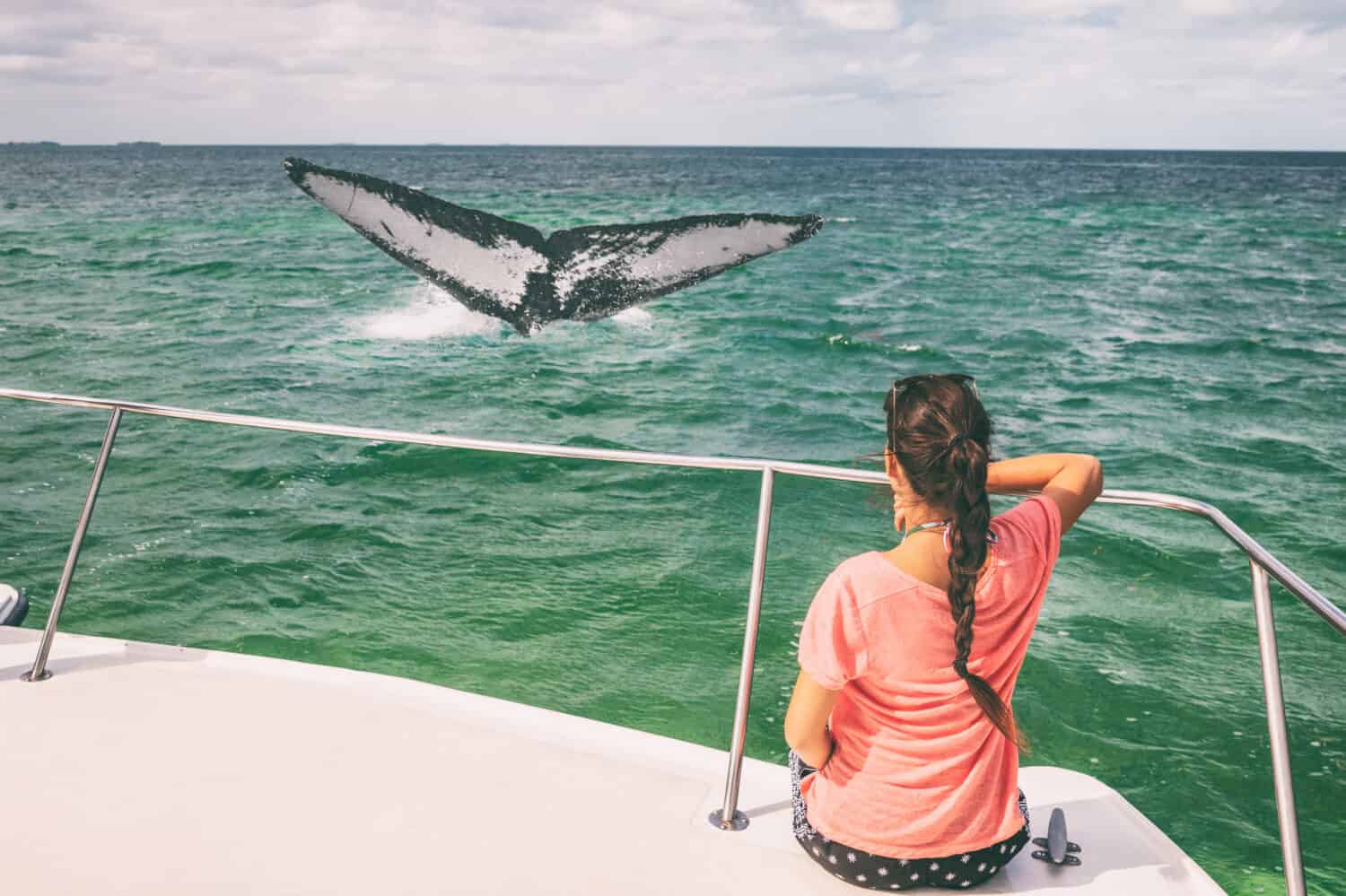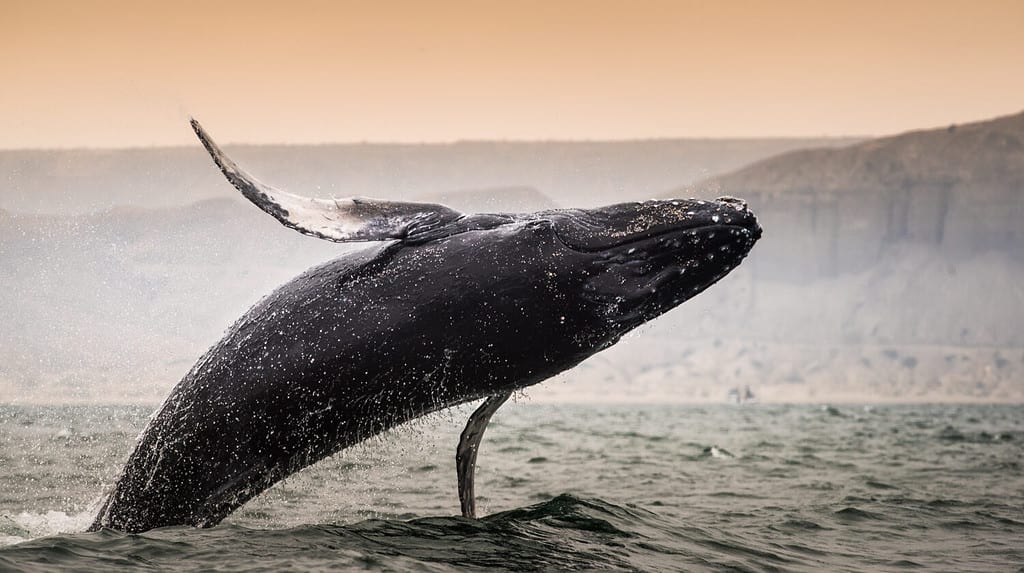Whales have long been intriguing and fascinating subjects. They are fascinating to see due to their enormous size and beautiful motions. The rarity of genuine observations by people makes each encounter that has been documented distinct, especially when they look to be frozen in the moment.
Watch the Incredible Tik Tok Footage Now!
A remarkable ‘headstand’ by a humpback whale against a tranquil horizon was captured on camera by an Australian TikTok star. Brodie Moss claims that as he was kayaking around in a translucent kayak, a whale’s tail abruptly breached the surface of the water in front of him.
He points ahead at a massive humpback whale with a fluted tail that is nearly completely immobile as it simply floats along frozen in the water. A newborn whale can be seen swimming near the tail while Moss paddles away to maintain his distance.
Moss submerges his camera to get the image of the calf, which is presumably its mother, with its head resting on the adult whale’s chest. These two whales are singing to one another softly in the distance.
The melodies of humpback whales are renowned for their entrancing beauty. These melodies are audible for miles underwater and may continue for up to 20 minutes.
What is Tail Sailing?

Tail sailing makes a whale appear frozen in time.
©Maridav/Shutterstock.com
The Tik Tok star and his viewers are astounded by this peculiar “tail-up” behavior. It has always piqued the curiosity of scientists as the animals appear frozen in time. It is frequently referred to as “tail sailing” since when a whale’s tail rises up out of the water, it looks like a sail on a boat.
It’s an astonishing sight that whale watchers only get to experience on rare occasions. Humans hardly ever witness this fascinating behavior, thus any recordings or sightings of it are priceless.
The specific reason for tail-sailing is still unknown to scientists. According to some ideas, whales do this behavior in order to sail through the sea by catching the wind. Some others think that might be a way for the massive ocean creature to cool off.
A fascinating notion suggests that the whale might feed near the ocean floor with its tail still above the water.
Quick Humpback Whale Facts

Humpback whales can breach the water and toss their entire bodies into the air.
©Christian Vinces/Shutterstock.com
A humpback whale can get as big as 60 feet long and as heavy as 40 tons. Despite their size, humpback whales remain significantly smaller than blue whales, which may reach heights of up to 110 feet.
Every day, humpback whales consume up to 3,000 pounds of tiny fish and crustaceans. These massive creatures can fit huge mouthfuls of water-filled prey into their extending throat pleats.
Do All Tales Show Their Flukes When Diving?

Getting a glimpse of a whale surfacing is a once-in-a-lifetime experience.
©Foto 4440/Shutterstock.com
When cetaceans dive, some of them will lift their tails or flukes out of the water. This is done instead of gradually submerging in order to go down steeply. Different kinds of cetaceans will either show or not show their flukes before diving. The deep sea feeders like the sperm whales usually display their flukes, whereas the surface feeders such as the fin whales never do. There are two types of fluking: a fluke-up, where the undersides are exposed by bringing the tail high into the air; this is common among sperm whales and humpback whales. Then there is a fluke-down, where the undersides remain hidden as the tail is brought clear of the water; blue whales and Risso’s dolphins do this frequently.
Another common behavior is tail slapping. This is when a whale submerges itself in water but leaves its tail exposed, then slaps the water’s surface repeatedly with its fluke. This is often done to communicate with other whales, such as to signal the presence of food or a predator, or even to attract potential mates. Cetaceans can also display this behavior when they are frustrated or attempting to keep predators away. Lastly, it may simply be a way to have fun or socialize. The most active lobtailers are typically more social cetacean species.
Thank you for reading! Have some feedback for us? Contact the AZ Animals editorial team.








